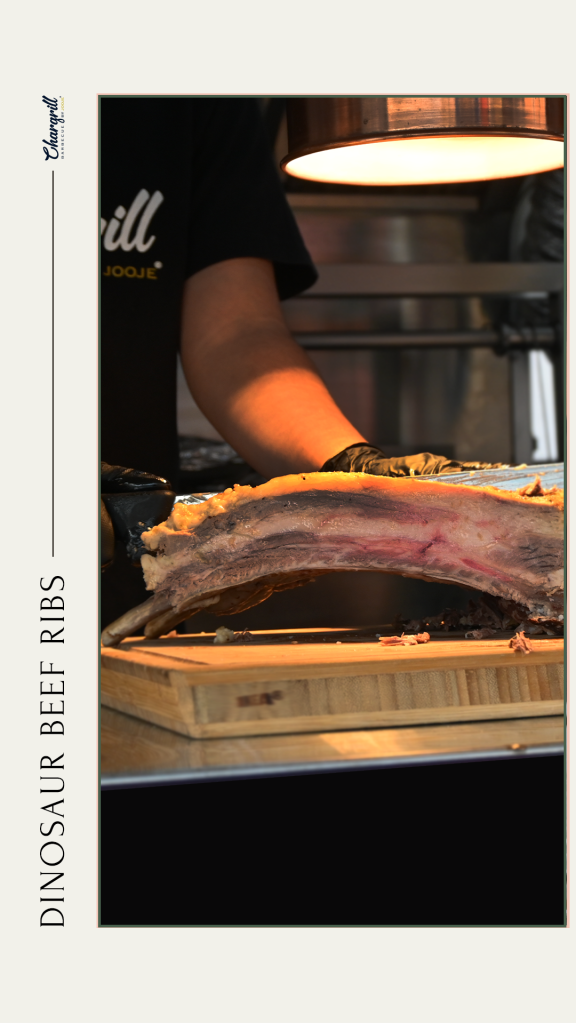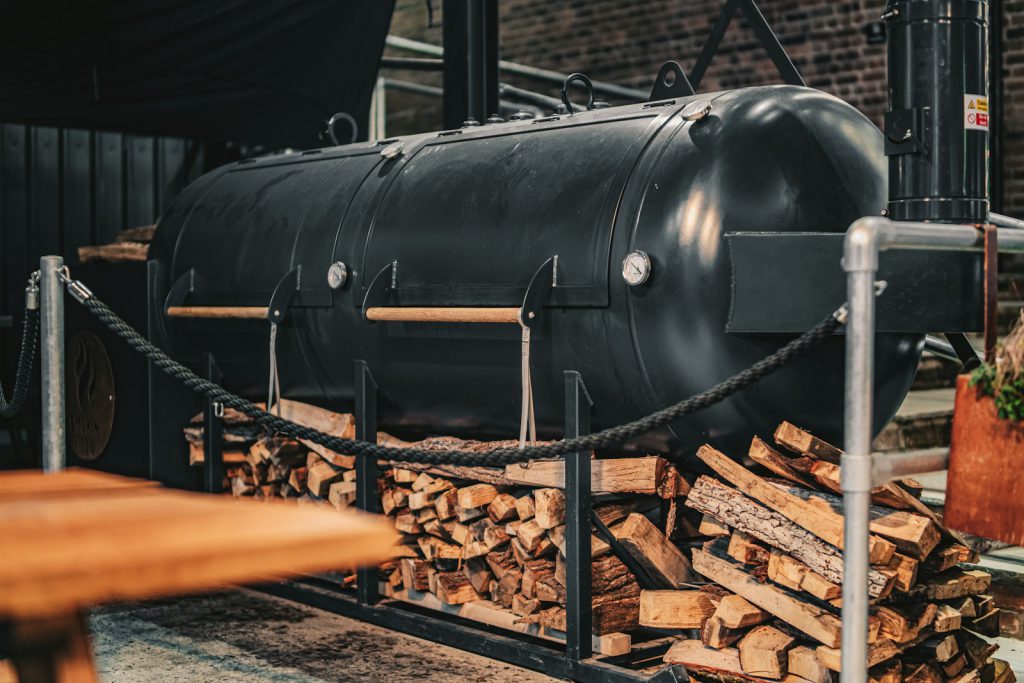Texas-style brisket rubs are celebrated for their simplicity and effectiveness. They often emphasize a balance of salt and pepper, with additional spices to enhance the meat’s natural flavors. The goal is to create a rich, flavorful bark while allowing the beef’s natural taste to shine through.
Why Texas-Style And Why Rubs?
Texas style barbecue, particularly brisket, is renowned for its deep, smoky flavor and tender texture. The cornerstone of this flavor profile is the rub. Traditional Texas brisket rubs are minimalistic, typically using a straightforward blend of salt and pepper. This simplicity allows the quality of the beef to be the star of the show. However, additional spices can be incorporated to add complexity without overpowering the meat’s natural flavors.
Historical Context
The origins of Texas barbecue can be traced back to the early settlers who brought with them techniques for smoking and preserving meat. Over time, these methods evolved, and the brisket, a tough cut of meat from the cow’s chest, became a staple. The rubs used were designed to enhance the meat’s flavor and create a delicious crust or “bark.”
Key Characteristics
A good Texas-style rub creates a flavorful bark on the brisket, a crusty layer formed during the smoking process. This bark is a combination of the spices in the rub and the Maillard reaction, which occurs as the meat’s surface sugars and proteins react to the heat. The rub should complement the smoke flavor, not overpower it, allowing the natural beef flavor to come through.

The Essential Ingredients of a Brisket Rub
The foundation of a Texas-style brisket rub is simple but powerful. Typically, the rub includes coarse kosher salt and coarse black pepper in equal parts. This base can be enhanced with garlic powder, onion powder, paprika, and occasionally a bit of sugar or other spices like coriander. The balance of these ingredients creates a savory, slightly smoky profile that complements the beef without overpowering it.
Detailed Ingredient Breakdown
- Coarse Kosher Salt: This is a key ingredient, providing the necessary seasoning to penetrate the meat and enhance its natural flavors. The coarseness helps in creating a good texture for the bark.
- Coarse Black Pepper: The pepper adds a sharp, pungent flavor that pairs well with the beef. Coarsely ground pepper is preferred as it withstands the long smoking process better than finely ground pepper.
- Garlic Powder: Adds a subtle, earthy flavor that enhances the overall taste without being overpowering.
- Onion Powder: Complements the garlic and adds a depth of flavor to the rub.
- Paprika: Provides a mild sweetness and a smoky flavor, especially if smoked paprika is used. It also adds a rich color to the bark.
- Ground Coriander: Adds a hint of citrus and spice, rounding out the flavor profile.
- Brown Sugar (Optional): Adds a touch of sweetness that can help balance the salt and pepper. It also contributes to the caramelization process, aiding in bark formation.
Recipe and Application
Basic Texas-Style Brisket Rub Recipe
| Ingredient | Quantity |
|---|---|
| Coarse kosher salt | 2 tablespoons |
| Coarse black pepper | 2 tablespoons |
| Garlic powder | 1 tablespoon |
| Onion powder | 1 tablespoon |
| Paprika | 1 tablespoon |
| Ground coriander | 2 teaspoons |
| Brown sugar | 1 tablespoon (optional) |
- Combine: Mix all the ingredients in a bowl, ensuring they are well combined.
- Apply: Generously apply the rub to the brisket, ensuring an even coating. Use your hands to press the rub into the meat, ensuring it adheres well.
- Rest: Let the rubbed brisket sit for at least an hour before smoking. This allows the flavors to penetrate the meat slightly and helps the rub to adhere better during smoking.
Table 1: Basic Texas-Style Brisket Rub Recipe
| Ingredient | Quantity |
|---|---|
| Coarse kosher salt | 2 tablespoons |
| Coarse black pepper | 2 tablespoons |
| Garlic powder | 1 tablespoon |
| Onion powder | 1 tablespoon |
| Paprika | 1 tablespoon |
| Ground coriander | 2 teaspoons |
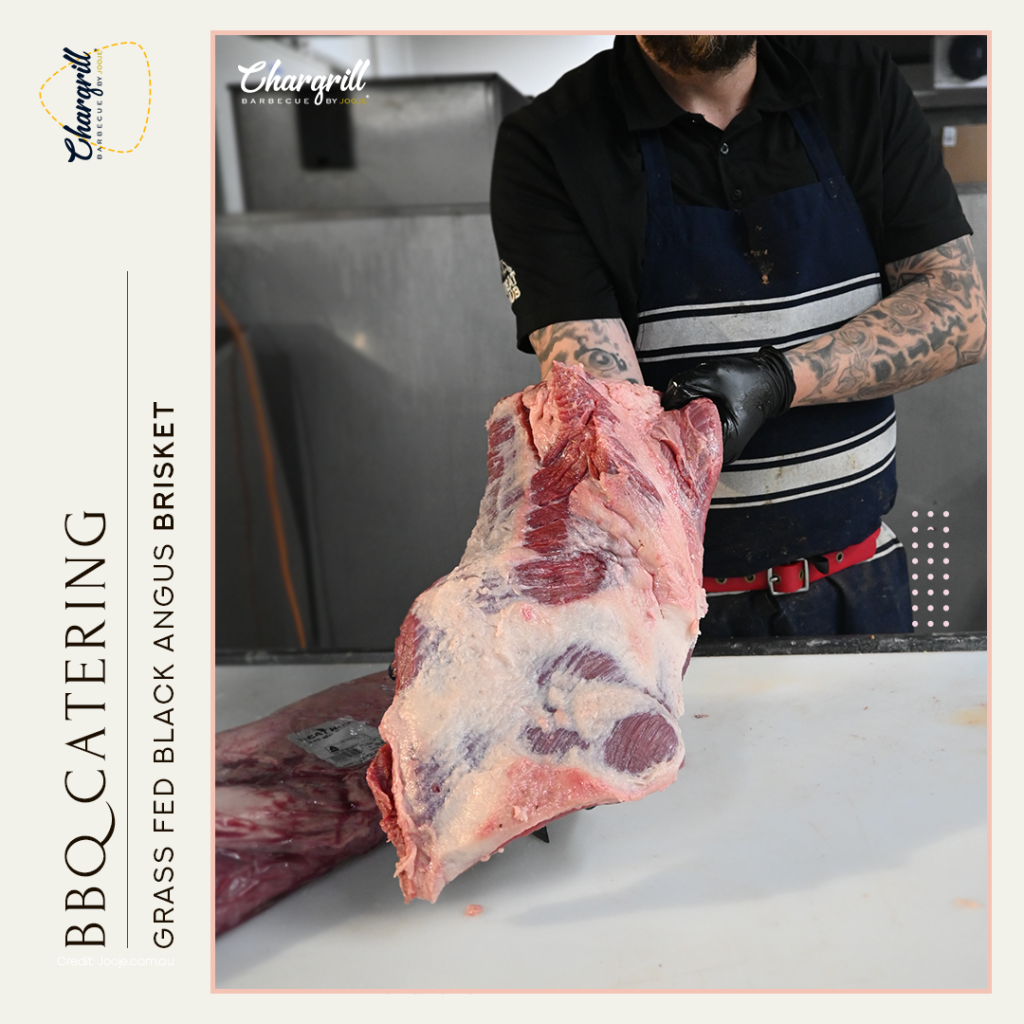
Preparing Your Brisket for the Rub
Proper preparation of the brisket is crucial. Start by trimming excess fat, leaving about a quarter inch to maintain moisture during smoking. Apply the rub generously and ensure it adheres well to the meat. Some pitmasters use mustard as a binder, though this is optional and not strictly necessary for flavor penetration.
Trimming the Brisket
- Remove Excess Fat: Trim the fat cap down to about a quarter inch. This ensures that the brisket remains moist during smoking without being overly fatty.
- Silver Skin: Remove any silver skin, a thin, silvery membrane that can become tough and chewy when cooked.
Applying the Rub
- Binder (Optional): Some pitmasters use a thin layer of mustard or olive oil as a binder to help the rub stick to the meat. While this can help, it is not strictly necessary, as the rub will adhere well without it.
- Generous Application: Apply the rub generously, covering all sides of the brisket. Use your hands to press the rub into the meat, ensuring it adheres well.
- Resting Period: After applying the rub, let the brisket sit for at least an hour before smoking. This allows the flavors to penetrate the meat slightly and helps the rub to adhere better during smoking.
Table 2: Trimming and Applying Rub
| Step | Description |
|---|---|
| Trim fat | Remove excess fat, leaving a quarter inch |
| Apply binder (optional) | Use a thin layer of mustard or olive oil |
| Rub application | Generously coat with rub, pressing to adhere |
| Resting before smoking | Let the rub sit on the meat for at least an hour before smoking |
Smoking Techniques for Texas Brisket
Smoking a brisket involves low and slow cooking to break down the tough connective tissues. The ideal smoking temperature is around 225°F. Use hardwoods like oak, hickory, or mesquite to impart a rich, smoky flavor.
Setting Up Your Smoker
- Fuel: Use hardwoods like oak, hickory, or mesquite. These woods impart a rich, smoky flavor that complements the beef. Avoid using softwoods, as they can produce a bitter taste.
- Temperature: Maintain a consistent temperature of around 225°F. This low and slow method ensures the meat becomes tender and flavorful.
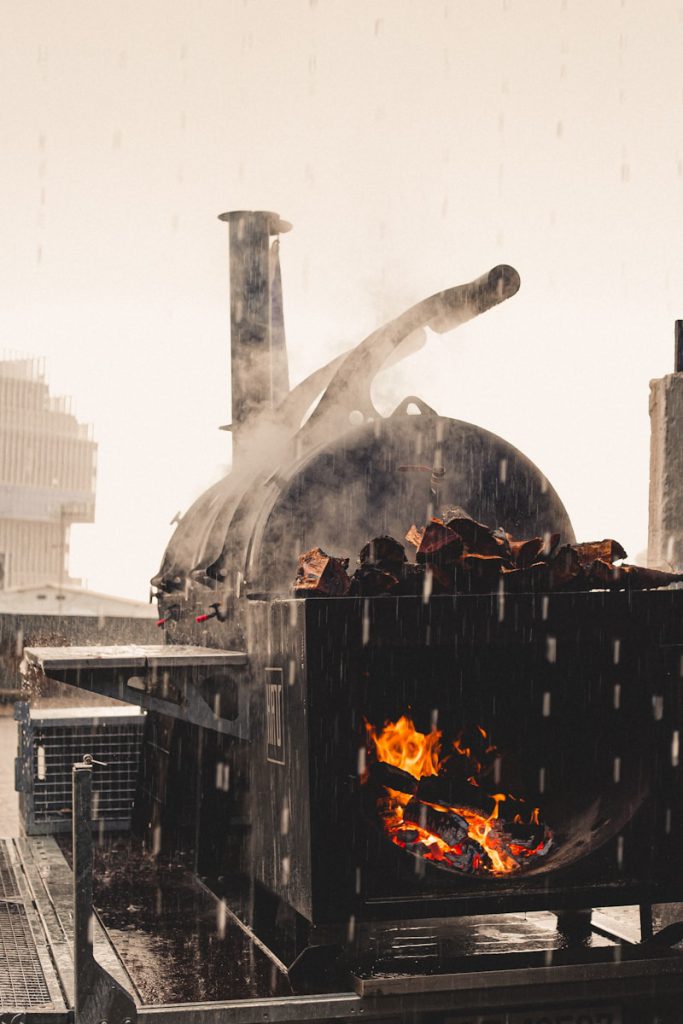
Smoking Process
- Initial Smoke: Place the brisket in the smoker, fat side up. This allows the fat to render and baste the meat as it cooks.
- Spritzing (Optional): Some pitmasters spritz the brisket with a liquid (like apple juice or vinegar) every few hours to keep the surface moist. This is optional and depends on personal preference.
- Wrapping: Once the brisket reaches an internal temperature of around 160-170°F, consider wrapping it in butcher paper or aluminum foil. This helps retain moisture and accelerates the cooking process.
- Finishing: Continue smoking until the brisket reaches an internal temperature of around 190-203°F. This is the sweet spot for a tender, juicy brisket.
- Resting: Once the brisket reaches the desired internal temperature, remove it from the smoker and let it rest for at least an hour. This allows the juices to redistribute throughout the meat, resulting in a more flavorful and tender brisket.
Table 3: Smoking Times and Temperatures
| Weight of Brisket | Smoking Time | Internal Temperature (Finished) |
|---|---|---|
| 3 pounds | 4.5 – 5.5 hours | 190-203°F |
| 8 pounds | 12 – 14 hours | 190-203°F |
| 15 pounds | 22.5 – 27 hours | 190-203°F |
Advanced Flavor Enhancements
Advanced Flavor Enhancements
For those looking to add complexity, consider incorporating additional spices like cumin, chili powder, or brown sugar. These ingredients can add depth and a slight sweetness to the rub, enhancing the overall flavor profile.
Additional Ingredients
- Cumin: Adds a warm, earthy flavor that complements the smokiness of the brisket.
- Chili Powder: Provides a mild heat and a rich, complex flavor.
- Brown Sugar: Adds a touch of sweetness that can help balance the salt and pepper. It also contributes to the caramelization process, aiding in bark formation.
- Cayenne Pepper: For those who like a bit of heat, cayenne pepper can add a spicy kick to the rub.
- Mustard Powder: Adds a tangy, slightly sharp flavor that can enhance the overall taste.
Advanced Brisket Rub Recipe
| Ingredient | Quantity |
|---|---|
| Coarse kosher salt | 2 tablespoons |
| Coarse black pepper | 2 tablespoons |
| Garlic powder | 1 tablespoon |
| Onion powder | 1 tablespoon |
| Paprika | 1 tablespoon |
| Ground coriander | 2 teaspoons |
| Brown sugar | 1 tablespoon |
| Chili powder | 1 teaspoon |
| Cumin | 1 teaspoon |
| Cayenne pepper | 1/2 teaspoon |
| Mustard powder | 1/2 teaspoon |
- Combine: Mix all the ingredients thoroughly in a bowl, ensuring an even distribution of spices.
- Application: Apply the rub generously to the brisket, ensuring all surfaces are covered. Use your hands to press the rub into the meat to help it adhere better.
- Rest: Let the brisket sit with the rub applied for at least an hour before smoking to allow the flavors to start penetrating the meat.
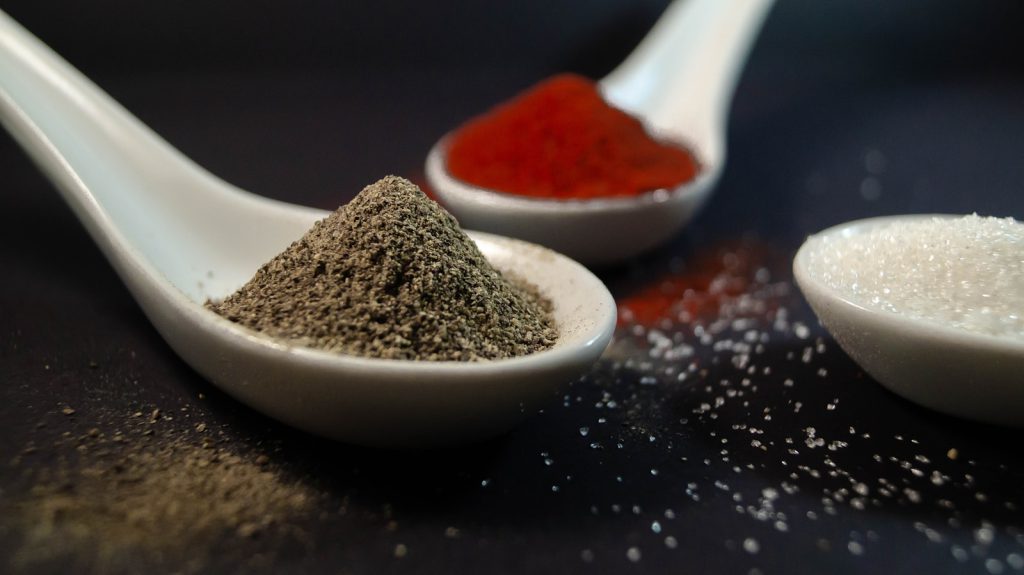
Table 4: Advanced Brisket Rub Recipe
| Ingredient | Quantity |
|---|---|
| Coarse kosher salt | 2 tablespoons |
| Coarse black pepper | 2 tablespoons |
| Garlic powder | 1 tablespoon |
| Onion powder | 1 tablespoon |
| Paprika | 1 tablespoon |
| Ground coriander | 2 teaspoons |
| Brown sugar | 1 tablespoon |
| Chili powder | 1 teaspoon |
| Cumin | 1 teaspoon |
| Cayenne pepper | 1/2 teaspoon |
| Mustard powder | 1/2 teaspoon |
Storing and Using Leftover Rub
Homemade rubs can be stored in an airtight container for up to six months. This allows you to prepare in advance and ensures you always have a fresh batch ready for your next smoking session.
Storage Tips
- Airtight Containers: Store the rub in an airtight container to prevent moisture from entering. Mason jars, resealable plastic bags, or vacuum-sealed bags work well.
- Cool, Dry Place: Keep the rub in a cool, dry place, such as a pantry or cupboard, away from direct sunlight. This helps maintain the freshness and potency of the spices.
- Labeling: Label the container with the date the rub was made to keep track of its shelf life. Although the rub can last up to six months, it is best used within the first three months for optimal flavor.
Table 5: Storage Guidelines
| Storage Method | Shelf Life |
|---|---|
| Airtight container | Up to 6 months |
| Resealable bag | Up to 6 months |
Applying Rubs to Different Cuts of Meat
While brisket is the star, Texas-style rubs are versatile and can be used on other cuts like beef ribs, pork shoulder, and even chicken. The key is to adjust the cooking time and method to suit the specific cut of meat.
Versatility of Texas-Style Rubs
- Beef Ribs: Texas-style rubs work wonderfully on beef ribs. Apply the rub generously and smoke them low and slow until they are tender and juicy.
- Pork Shoulder: This cut benefits from the deep flavors of a Texas rub. The rub helps form a delicious bark while the long cooking time ensures the meat is tender and flavorful.
- Chicken: For a smoky, flavorful chicken, apply the rub under the skin as well as on top. Smoke the chicken until it reaches the appropriate internal temperature, ensuring a moist and flavorful result.
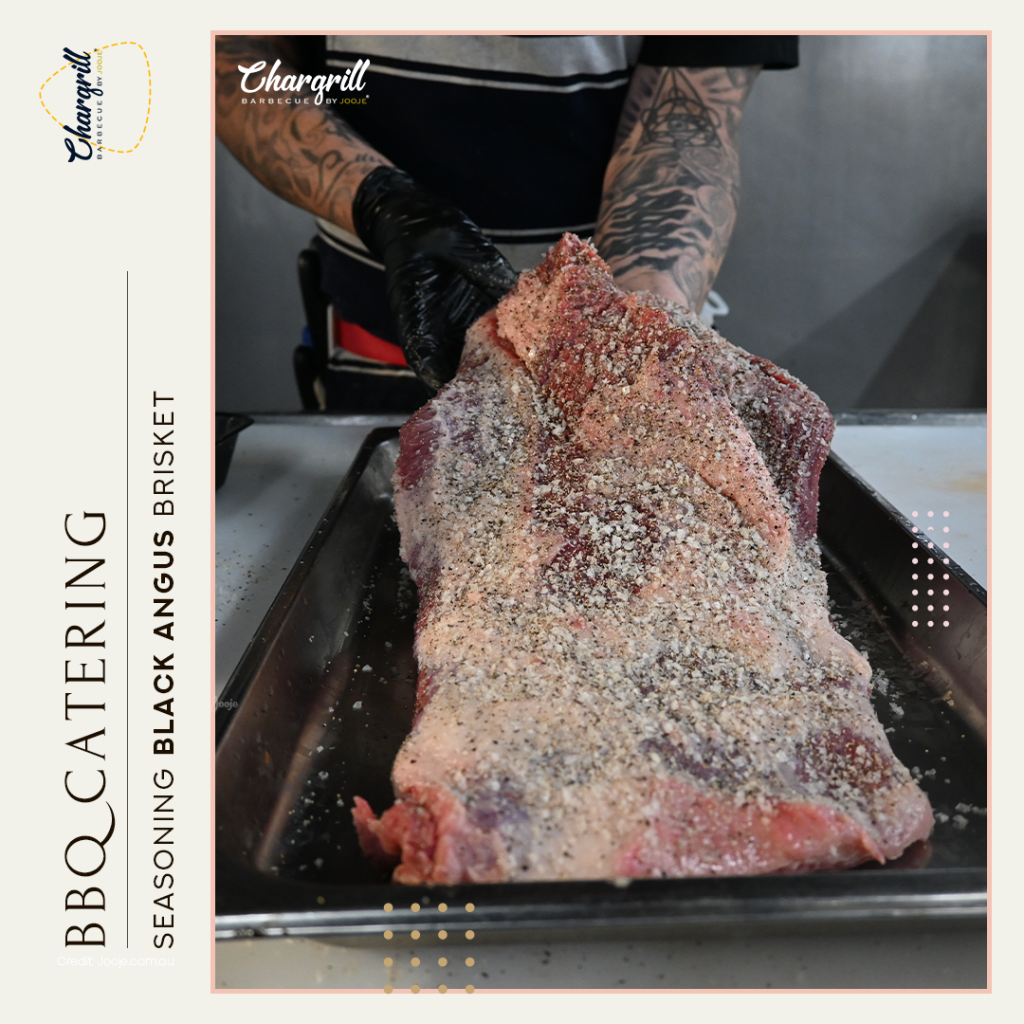
Table 6: Rub Application for Various Meats
| Meat Cut | Rub Application | Cooking Method |
|---|---|---|
| Beef ribs | Generous coating | Low and slow smoking |
| Pork shoulder | Thick layer | Low and slow smoking |
| Chicken | Light to medium coat | Grilling or smoking |
Common Mistakes to Avoid
Common mistakes include applying too much rub, not allowing the brisket to rest before slicing, and using too high a temperature during smoking. Avoid these pitfalls to achieve the best results.
Pitfalls and Solutions
- Over-Rubbing: Applying too much rub can overpower the meat’s natural flavors and create a bitter taste. A moderate, even coat is sufficient.
- Skipping the Rest Period: Allowing the brisket to rest after smoking is crucial for juicy, tender meat. The resting period lets the juices redistribute throughout the meat.
- High Smoking Temperature: Smoking at too high a temperature can dry out the brisket and prevent the formation of a good bark. Maintain a steady 225°F for the best results.
Table 7: Common Brisket Smoking Mistakes
| Mistake | Solution |
|---|---|
| Over-rubbing | Apply a moderate, even coat |
| Not allowing rest time | Rest for at least an hour |
| Smoking at too high a temperature | Maintain 225°F consistently |
Tips for Achieving the Perfect Bark
The coveted bark on a smoked brisket is a combination of the right rub, proper smoking temperature, and sufficient time. The rub contributes to the formation of this flavorful crust, while the smoking process develops it fully.
Bark Formation
- Coarse Ingredients: Using coarse salt and pepper helps form a good bark. The larger granules create a textured crust that enhances the brisket’s flavor.
- Consistent Temperature: Maintaining a steady smoking temperature is key to developing a good bark. Fluctuations can cause uneven cooking and affect the bark’s formation.
- Moisture Management: Avoid excessive moisture during smoking. While some pitmasters spritz the meat, it’s important not to overdo it, as too much moisture can prevent a proper bark from forming.
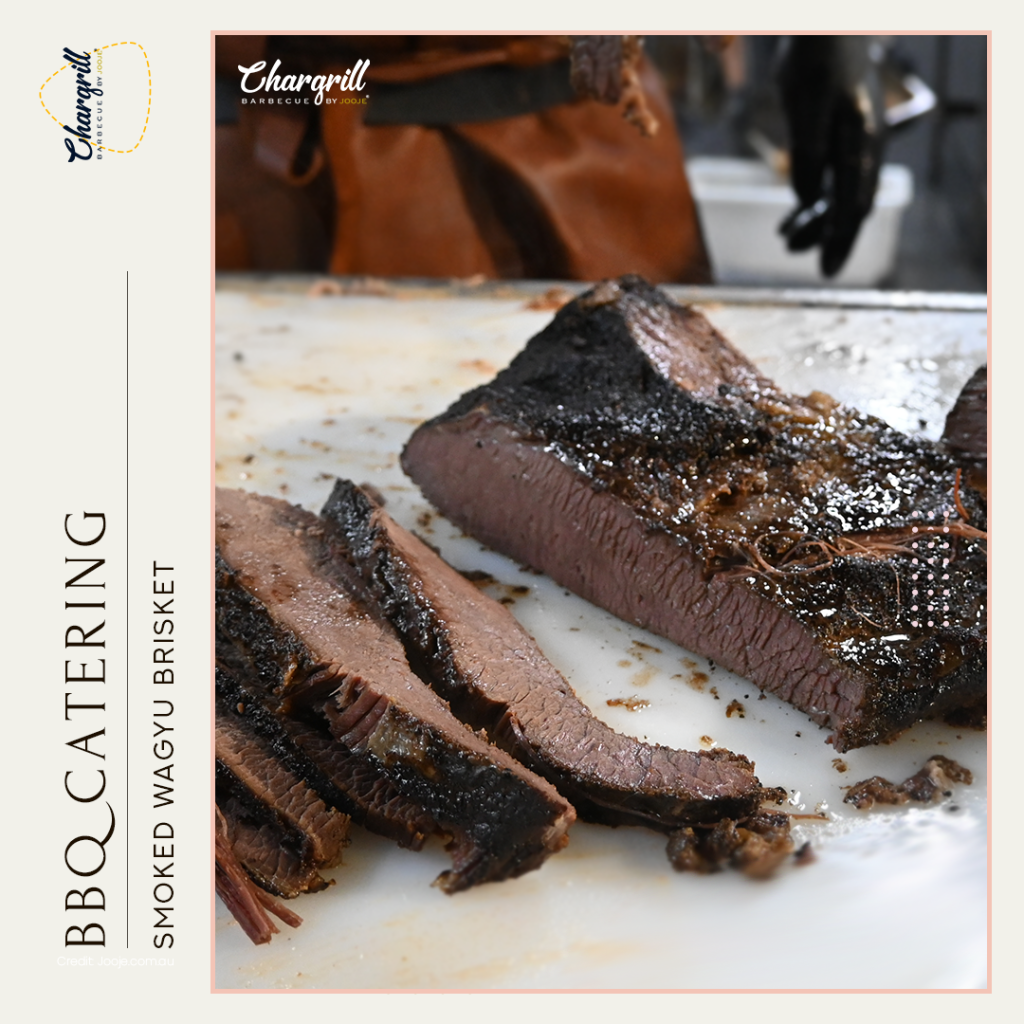
Table 8: Tips for Perfect Bark
| Tip | Description |
|---|---|
| Use coarse salt and pepper | Forms the base for a good bark |
| Maintain consistent temperature | Ensures even cooking and bark formation |
| Avoid excessive moisture | Prevents soggy bark |
Pairing Brisket with Sides and Sauces
The right sides and sauces can elevate your brisket experience. Traditional pairings include coleslaw, baked beans, and potato salad. A tangy barbecue sauce or a simple vinegar-based sauce can complement the rich flavors of the brisket.
Side Dishes
- Coleslaw: A crunchy, tangy coleslaw provides a refreshing contrast to the rich, smoky brisket.
- Baked Beans: Sweet and savory baked beans are a classic side that pairs well with brisket. The sweetness of the beans complements the smoky flavors of the meat.
- Potato Salad: A creamy potato salad offers a cool, comforting side that balances the heat and spice of the brisket.
Sauces
- Barbecue Sauce: A tangy, sweet, or spicy barbecue sauce can enhance the flavor of the brisket. Texas-style barbecue sauces typically have a tomato base with a balanced mix of sweet and spicy flavors.
- Vinegar-Based Sauce: A simple vinegar-based sauce can cut through the richness of the brisket and add a tangy note that complements the meat.
Table 9: Side Dishes and Sauces
| Side Dish | Description |
|---|---|
| Coleslaw | Crunchy, tangy complement |
| Baked beans | Sweet and savory pairing |
| Potato salad | Creamy, cool contrast |
| Barbecue sauce | Tangy, sweet, or spicy options |
| Vinegar-based sauce | Simple and tangy |
What are the essential ingredients for a Texas-style brisket rub?
A Texas-style brisket rub typically includes coarse kosher salt and coarse black pepper as the base ingredients. Additional spices such as garlic powder, onion powder, paprika, and ground coriander are commonly added to enhance the flavor.
How do I apply a brisket rub properly?
To apply a brisket rub, first trim the excess fat from the brisket, leaving about a quarter inch. Optionally, apply a thin layer of mustard or olive oil as a binder. Generously coat the brisket with the rub, pressing it into the meat to ensure it adheres well. Let the rubbed brisket sit for at least an hour before smoking.
Can I make a brisket rub in advance and store it?
Yes, you can make a brisket rub in advance. Store it in an airtight container in a cool, dry place for up to six months. Label the container with the date it was made to keep track of its freshness.
Are there any additional spices I can add to a brisket rub for more flavor?
Yes, additional spices like cumin, chili powder, brown sugar, cayenne pepper, and mustard powder can be added to a brisket rub for more complexity and depth of flavor. These spices enhance the overall profile without overpowering the beef.
How much rub should I use for one brisket?
The amount of rub you should use depends on the size of the brisket. As a general guideline, apply about 1 to 1.5 tablespoons of rub per pound of brisket. Ensure the entire surface is evenly coated.
Should I use a binder when applying a brisket rub?
Using a binder such as mustard or olive oil is optional. It can help the rub adhere better to the meat, but it is not necessary for flavor penetration. The rub will stick to the meat even without a binder.
Can Texas-style brisket rubs be used on other meats?
Yes, Texas-style brisket rubs are versatile and can be used on other cuts of meat such as beef ribs, pork shoulder, and chicken. Adjust the cooking method and time to suit the specific cut of meat.


